
The Right Honourable Mary Simon aims to be an Arctic fox
Canada’s first-ever Indigenous governor general doesn’t play favourites among our majestic natural wonders, but she...
The Okanagan Valley is on fire.
Seven wildfires of note are currently burning along the Okanagan corridor, which straddles Okanagan Lake between Kelowna and Penticton, two of the valley’s largest urban centres.
Four of them are “out of control,” according to a spokesperson for the B.C. Wildfire Service. The fires were started after a towering lightning storm on July 17 sparked at least 38 wildfires across the province, including 14 along the Okanagan Corridor.

John Youngblut, Linda Youngblut, and Paul Henbury watch the Mount Eneas fire burn near their homes on Princeton Avenue, in Peachland, B.C. July 20, 2018. Photo: Jake Sherman.
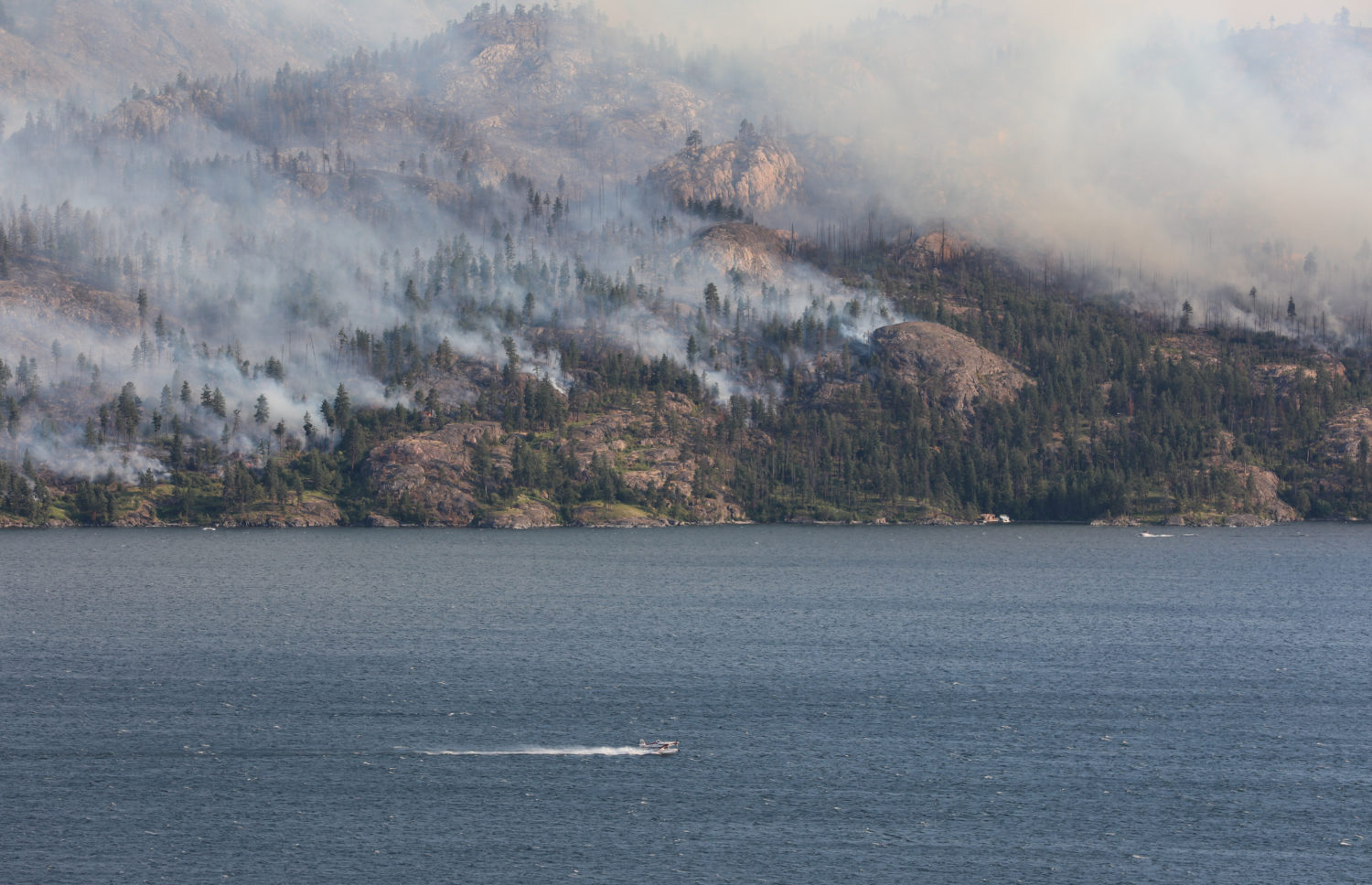
A water bomber picks up water out of Okanagan Lake to battle the Goode Creeke wildfire burning in Okanagan Mountain Provincial Park. Photo: Jake Sherman.
2017 marked the worst fire season on record for B.C. Scientists say climate change means the province’s wildfire season is becoming longer and more explosive
.
The largest of B.C.’s fires right now is the Mount Eneas wildfire, which is burning across an area of about 18 square kilometres and is classified as out of control. It’s located four kilometres south of Peachland, a district municipality with about 5,500 residents.
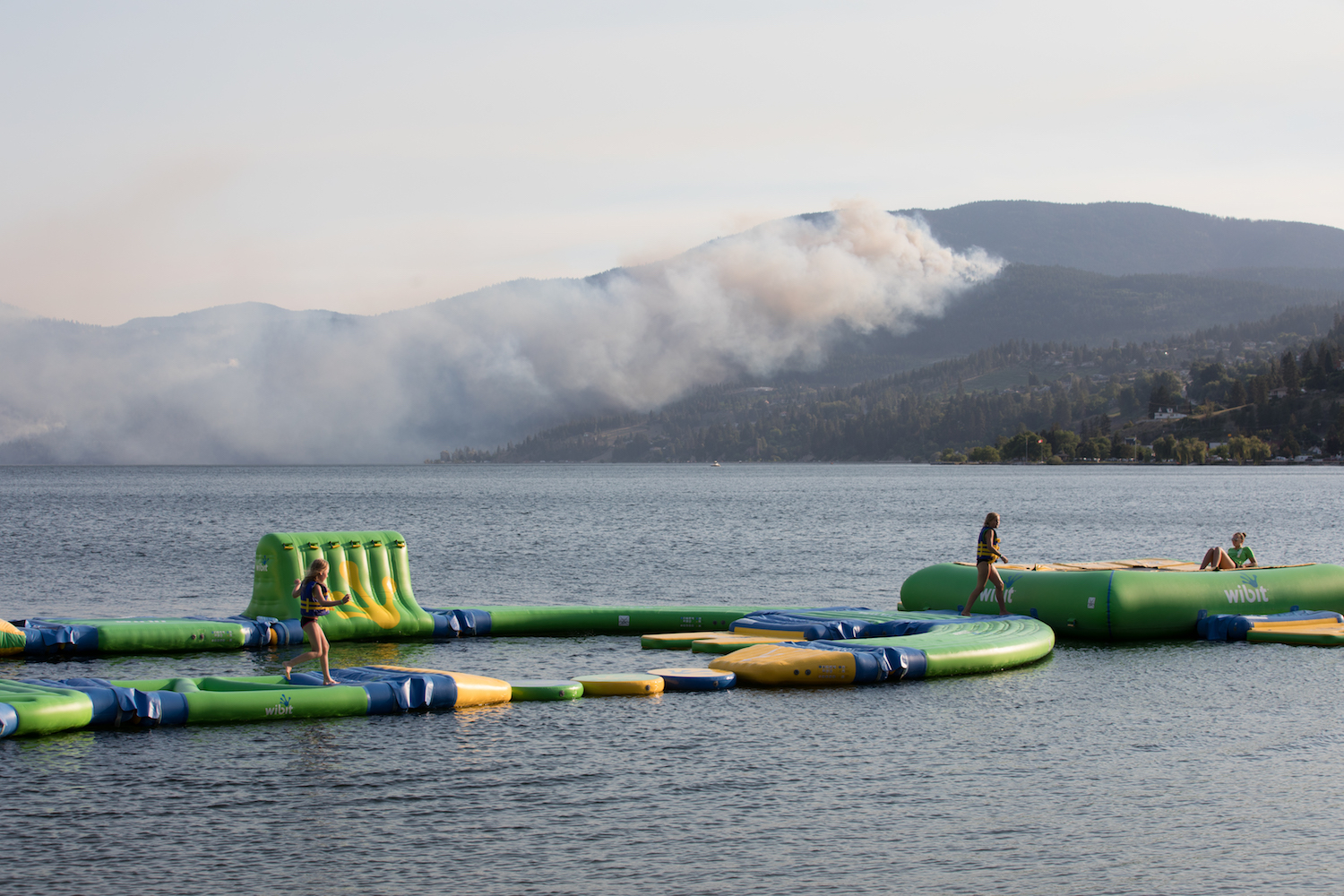
Smoke billows from the site of the Mount Eneas wildfire as children play in the water on the shores of Okanagan Lake near Peachland, B.C., on July 20, 2018. Photo: Jake Sherman.
The second largest fire, covering about six square kilometres, is burning on the east side of Okanagan Lake — at the same site of the 2003 fire that threatened Kelowna, the valley’s largest urban centre. The 2003 fire forced the evacuation of more than 25,000 residents and burned more than 250 homes.
The memory of that wildfire is alive and well in the minds of the roughly 1,000 residents of Peachland who were evacuated or placed on alert in the past week. Don Lee is one of them.
On July 20, with the Goode Creek fire burning on the east side of Okanagan Lake across the water from Peachland, he was out fishing.
“When we evacuated in 2003, it was the same kind of storm as this one that set the whole thing off,” he said, taking a break from the pull of his rod. “The next day it had spread. But every year, it’s a problem. And it’s just starting.”
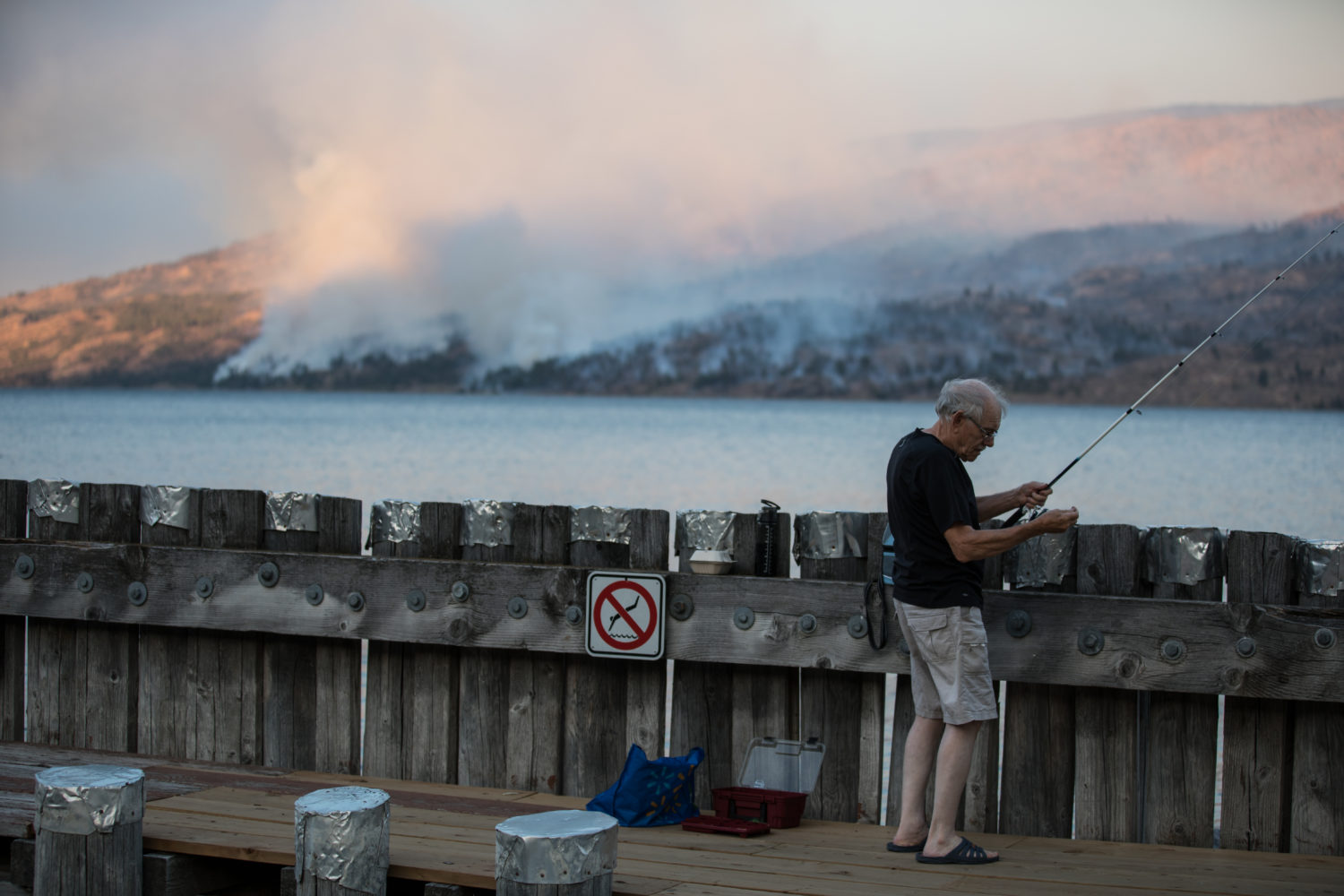
Don Lee ties a fishing hook onto his line on July 20 as the Goode Creeke wildfire burns near Peachland, B.C. Photo: Jake Sherman.
Wayne Davis was out watching the Goode Creek blaze from a dock on the night of July 23.
Davis moved to the Okanagan Valley in 1977, and says until 20 years ago, it didn’t get this bad. Now it’s a constant problem, he says.
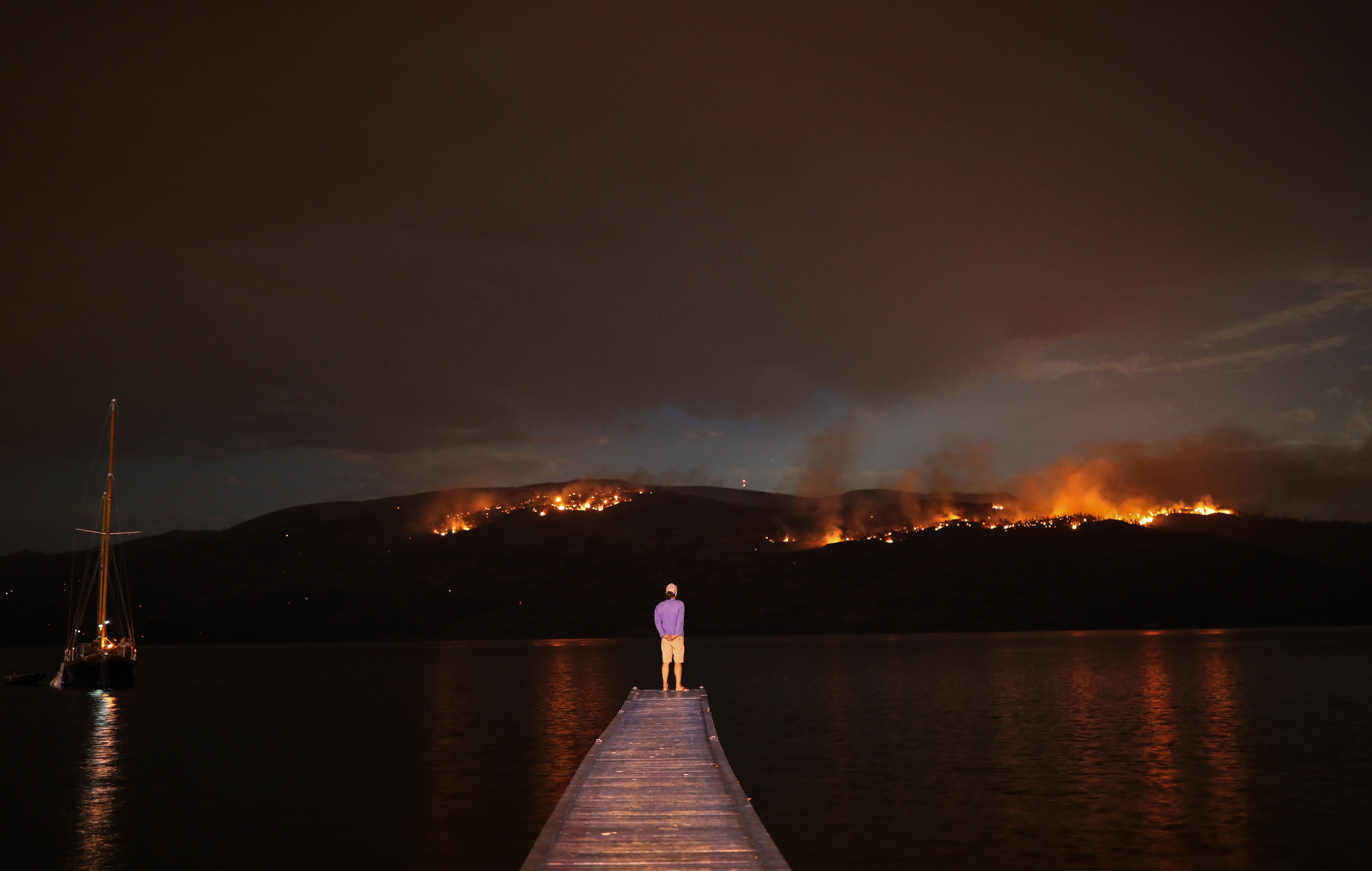
Wayne Davis takes in the Goode Creeke Wildfire from a dock in Peachland, B.C., on the evening of July 23. Photo: Jake Sherman.
That’s a sentiment that’s been backed up by members of the B.C. Wildfire Service, local government and fire rescue service, who are working together to battle the fires.
The Peachland Fire Rescue service has been out fighting the Mount Eneas fire, protecting the structures of its residents while the provincial fire service and the ministry of forests work to control and direct the blaze.
Some of the local Peachland firefighters who’ve been fighting the Mount Eneas fire are as young as 16, according to Peachland Fire Rescue Service assistant fire chief Tyler Hilland.
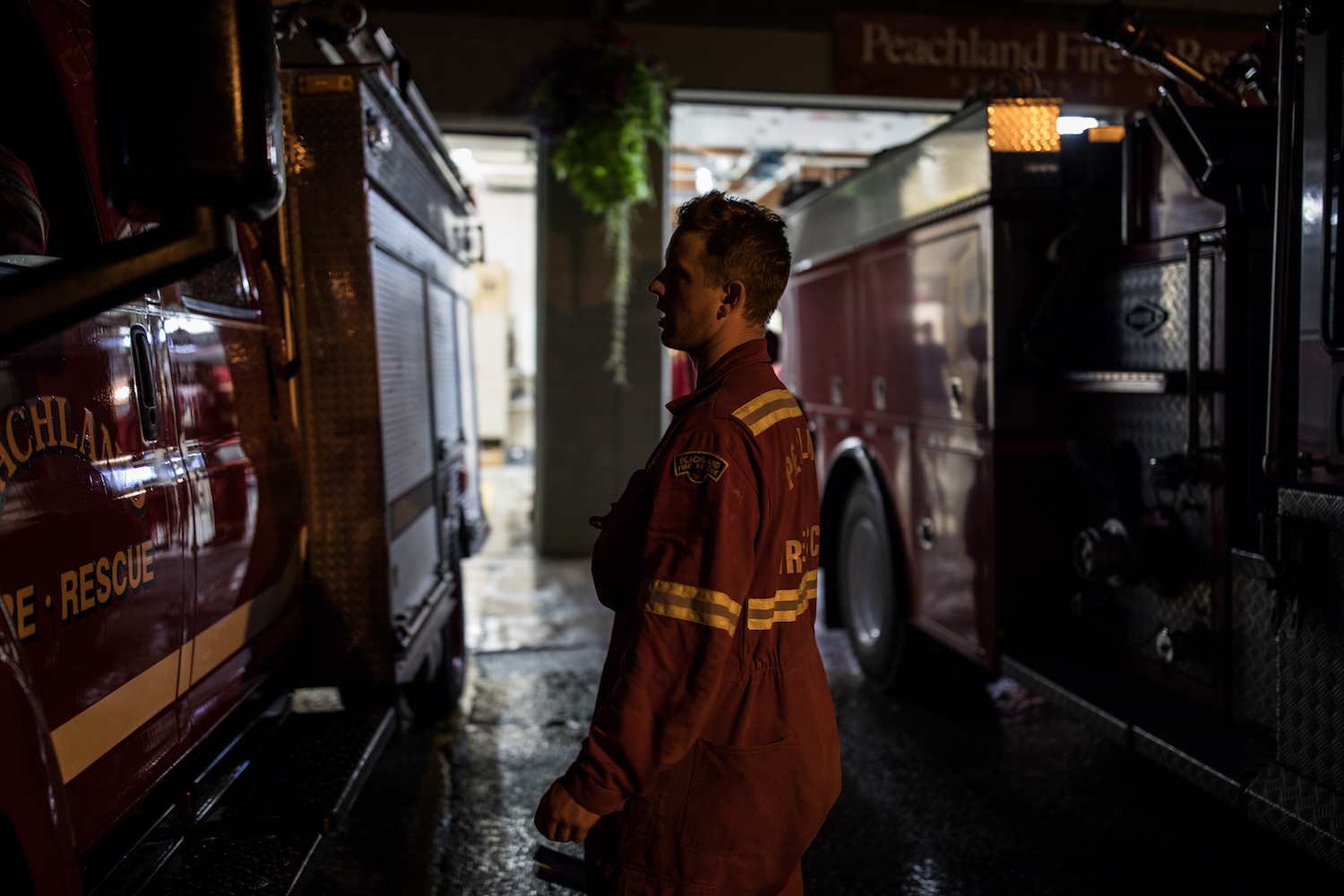
A member of the Peachland Fire Rescue Service debriefs after returning from fighting the Mount Eneas wildfire, burning just south of Peachland, B.C., on July 23. Photo: Jake Sherman.
Glen Burgess, the incident commander for the Okanagan complex of the B.C. Fire Service praised Hilland and the Peachland Fire Rescue Service at a press conference on July 24. He said the fire service is making progress on Mount Eneas and that they do not anticipate any further growth, despite the fact it is still classified as burning “out of control.”
“We’re extremely happy with the outcome. While the fire remains out of control we are not anticipating any further growth and we have a lot of resources on the scene,” Burgess said.
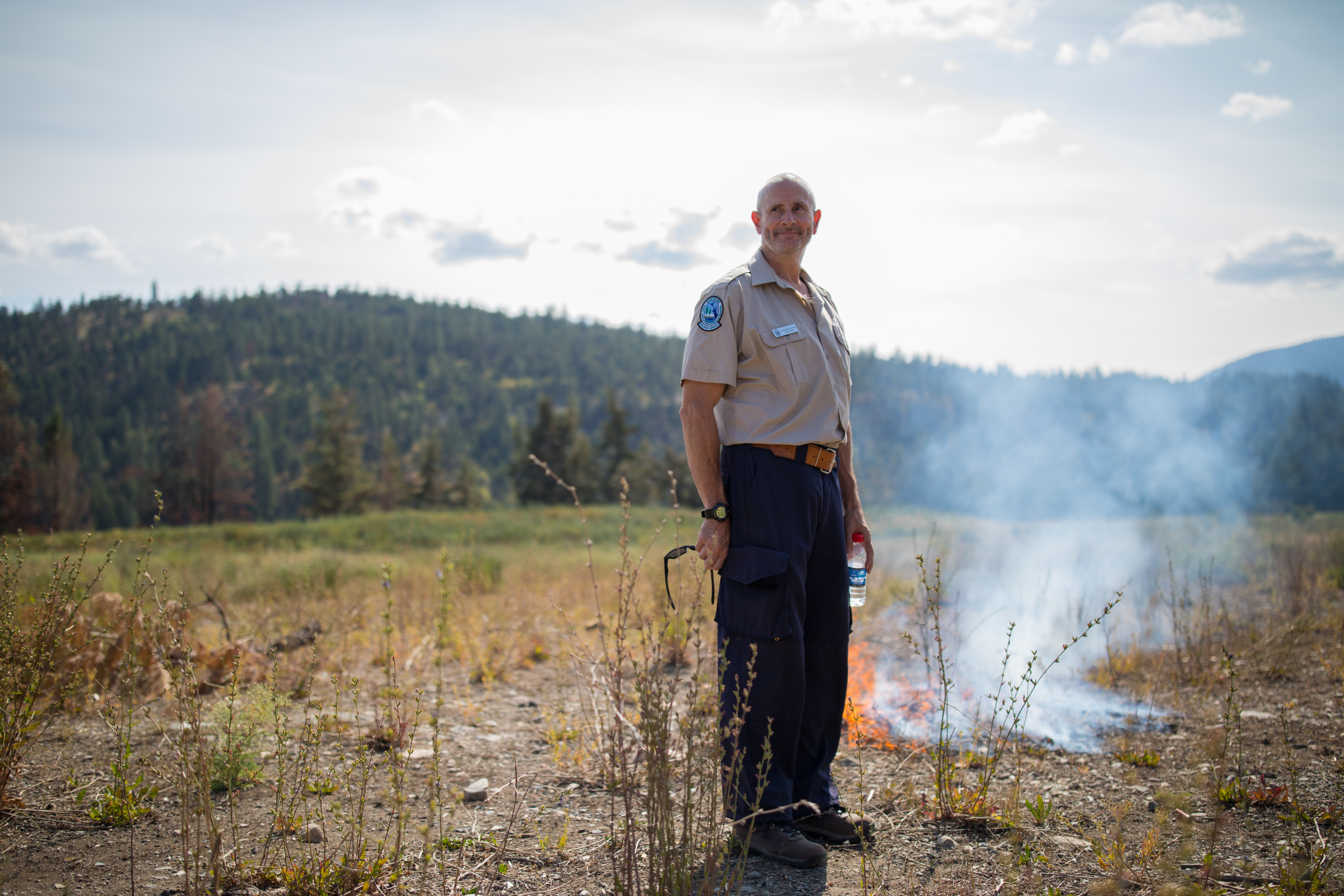
Glen Burgess, the incident commander for the Okanagan complex of the B.C. Wildfire Service stands next to a controlled burn on the hills above Peachland, B.C., on July 24. The burn was part of a demonstration of aerial ignition technology that was used to merge the Munro Lake and Mount Eneas wildfires, burning south of Peachland, B.C. Photo: Jake Sherman.
Though Burgess is confident, he acknowledged that high winds and more lightning in the forecast could reignite controlled fires still burning along the corridor.“Unfortunately it is still July and the fact of the matter is we have potentially a long hot summer ahead of us,” said Burgess speaking to reporters.
Hot temperatures and sun are forecast for the next week, and following the worst fire season on record, fire season in Interior B.C. is off to a sweltering start.
